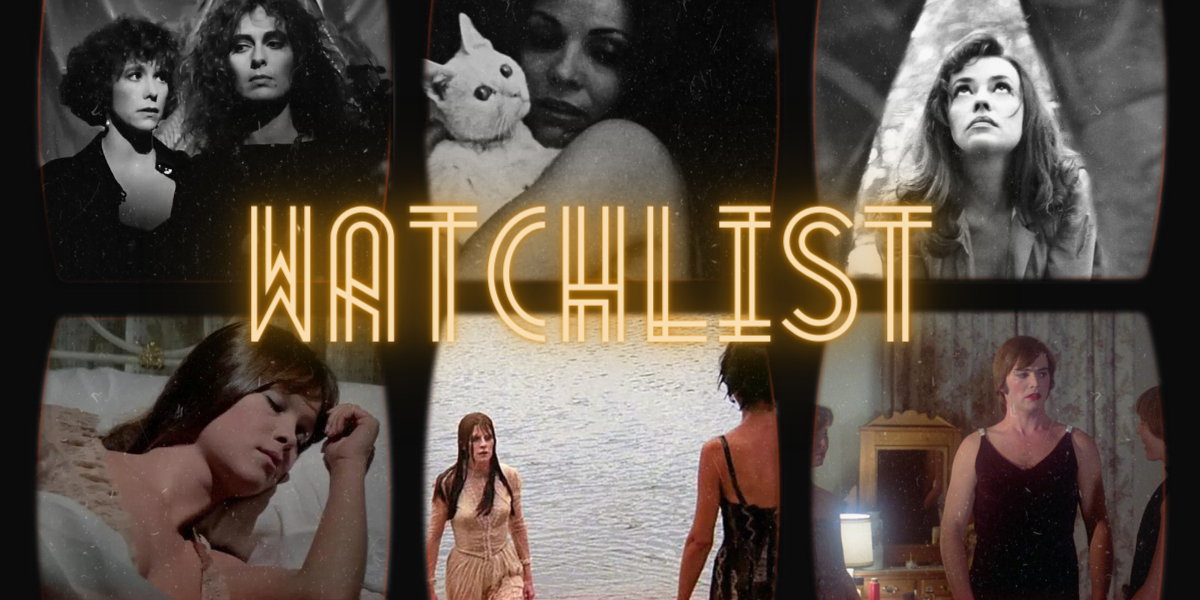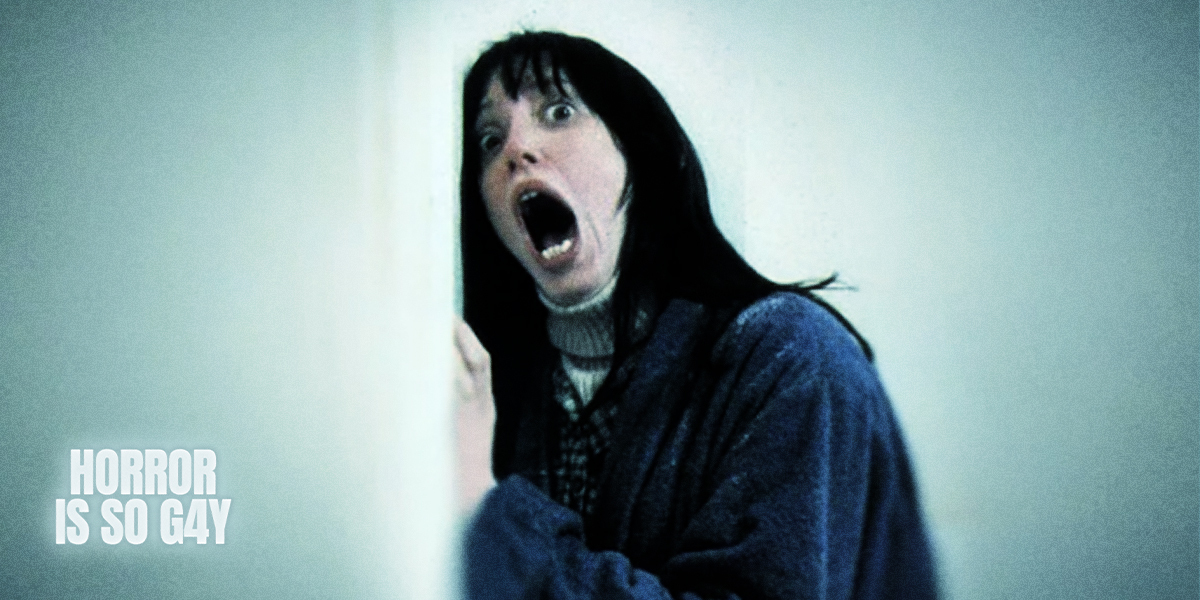I love a list.
My particular neuroses feel soothed when I structure a task and then cross them off one by one. This is true with chores; it’s true with art.
I understand the resistance of some to listify art. The goal of reading books is not to read all the books; the goal of watching movies is not to watch all the movies. For me, lists aren’t necessarily about completion — they’re about structure. When I go to an art museum, I don’t care if I see everything, but I do care about writing down the pieces that speak to me most so I can remember and revisit.
Since I was a child cinephile, I’ve used lists — other people’s and my own. I made my way through both AFI top 100s and through every Best Picture winner. I wrote down every movie mentioned in A Personal Journey Through American Movies with Martin Scorsese and watched as many as I could find. From these, I wrote my own looser list: a pre-Letterboxd Letterboxd watchlist.
There are limits to canonical lists since they represent the selected films of a certain subset of people. But now we are not restricted to institutions like AFI or Sight & Sound. Two of my favorite viewing projects in my early twenties were the first edition of Slate’s Black Film Canon and Little White Lies’ 100 Queer Classics.
Lately, I’ve taken a new approach to these viewing projects. I’ve added reading material. Earlier this year, I read a biography of George Cukor while watching and rewatching all of his films. This brought me beyond the canon, a chance to discover the hidden treasures in his filmography others have dismissed.
I’ve decided it’s more fun to unearth these treasures for others than allow them to stay in hiding. Whenever I finish a personal viewing project, I want to share my findings with all of you. Nothing will quite capture the full experience of my obsessions, but it’s worth a taste. And this first taste is delicious and bitter.
Last year, Kier-La Janisse’s seminal House of Psychotic Women was released in a 10th anniversary edition with an expanded appendix. I drooled over this memoir/coffee table book for months, weighing its cost against my desire. When my girlfriend got it for me for my birthday, I decided I would not simply be reading this text — it had to become a viewing project.
I started reading the book at the end of March after I finished watching the films referenced in the first chapter. My viewing projects don’t usually last this long, but as I watched each chapter’s films, I realized I had to approach this one slowly.
I love horror. I’ve always thought of myself as someone who has a high threshold for brutality and gore on-screen. And yet, the films mentioned in this book tested my limits. There was a mix of fun bloody romps and more disturbing fare, but God was the disturbing stuff really, really disturbing.
The biggest surprise of the project was how many of the films oozed with lesbianism. Considering my work on the Autostraddle Encyclopedia, I assumed I was at least aware of most lesbian films. This book proved me wrong. I forgot that horror and exploitation are often ignored by other lists. Movies deemed homophobic or misogynist are thought to no longer “count” as lesbian films. While I don’t agree with Janisse’s defense of all the films in the book, I do agree with her overall belief that a lot of these films are far more interesting — and queer — than other critics have given credit.
You can look at my Letterboxd list to see my very favorite films from the text. Here, I’m more interested in writing about the discoveries. I’ll always be excited to discuss Persona or Rebecca, but there are a lot of films I never would have seen if it weren’t for Janisse’s research and analysis. Join me in celebrating some of the best and gayest!
The Glass Ceiling (1971)

While Eloy de la Iglesia’s riff on Rear Window isn’t gay, it is very horny and my favorite discovery of this project. Martha is a bored housewife whose husband is often away for work. Her boredom leads to eavesdropping, which leads to suspicion as she grows convinced her neighbor has murdered her husband. Her investigation leads her to team up with another of her neighbor’s, the hunky sculptor, Victor. This, of course, results in some transgressions of her own. Many filmmakers have riffed on Hitchcock, but most confuse making the story more explicit with capturing the Master of Suspense’s depth of horniness. That is not a problem here. This movie works as a character drama, as a thriller, and as a work of art that drips with sex.
Singapore Sling (1990)

Speaking of sex, Nikos Nikolaidis’ Singapore Sling is one of the most graphic films I discovered as part of this project. What makes it stand out is its sex and violence is matched by its intelligence and craft. This isn’t an endurance test as much as it is a challenging and worthwhile work of art. Also a riff on a classic Hollywood movie — this time Otto Preminger’s Laura — Nikolaidis’ film is a film noir unlike any other. It has beautiful black and white cinematography and an angst-filled man trying to solve a mystery. But instead of stumbling upon a classic femme fatale, he ends up captured by two femme fatales who force him into their own psychosexual game. It’s unclear if these women are actually mother and daughter or if they’ve just adopted a mommi/baby dynamic. Either way, this film is not afraid of the taboo. It pushes boundaries with intention and is a must-watch for any noir fans who can stomach it.
Mademoiselle (1966)

This is another one that isn’t gay unless we’re counting my lifelong feelings about Jeanne Moreau. Directed by Tony Richardson, written by Marguerite Duras, from a story by Jean Genet, this film is a fascinating combination of styles. Moreau plays the titular character, a repressed school teacher who is secretly wreaking havoc on her small town. Everyone assumes the disasters are the work of handsome Italian, Manou, played by Ettore Manni, even though he’s done the most in mitigating Mademoiselle’s destruction. The film is a sharp portrayal of xenophobia and the feigned innocence of white women. It’s also complicated by the sadomasochistic relationship that develops between Manou and Mademoiselle. As complex as one might expect from a collaboration between Duras and Genet, the performances and cinematography make this worth its challenges.
Let’s Scare Jessica to Death (1971)

The book includes many films — vampiric and not — that feel inspired by lesbian horror classic Carmilla. Something like The Blood Spattered Bride is a more direct adaptation with a character named Carmilla, but my favorite is the looser Let’s Scare Jessica to Death. The film stars Zohra Lampert as Jessica, a woman whose husband has whisked her away to a secluded house after her stint in a mental hospital. Upon first arriving, she sees a young woman at the top of the stairs and is relieved when her husband sees the woman as well. This woman introduces herself as Emily, a drifter who was using the place to crash, and Jessica and her husband decide she can stay. Initially, Jessica is comforted by Emily’s companionship, but she soon begins to suspect Emily is actually a woman named Abigail who supposedly drowned many years ago. Emily/Abigail becomes a predator of sorts toward both Jessica and her husband, as Jessica questions her own sanity. Lampert’s performance is among the best horror performances I’ve ever seen. She anchors and enhances the film’s many mysteries.
The Corruption of Chris Miller (1973)

While the trope of a predatory queer woman was most common during this era, there were also films that featured the opposite: Two women are either explicitly in a sexual relationship or in an implied sexual relationship, and a man enters the picture to steal away the innocent girl who wasn’t really a lesbian. One of the best of these films, The Corruption of Chris Miller, is about a woman named Ruth who keeps her stepdaughter Chris as her prisoner. She tells her all men including her father are awful while she is Chris’ true predator. While films of this nature were intended as warnings against lesbianism as a whole, many of them now hold up as portrayals of complex queer abuse. It may feel weird to root for a man in a sapphic film, but that’s only if all sapphic films are forced to be romances. We deserve to see all sorts of queer relationship dynamics — even ones that need escape.
Prey (1977)

Another, even stranger, film of this subgenre is Norman J. Warren’s Prey. Here, the women are explicitly in a lesbian relationship. Jo has her younger lover Jessica secluded, convinced the only way to keep her is to keep her away from others. The man who disrupts their lives is not a man at all — he’s an alien who has taken the form of a man after eating him. This complicates the dynamic, the alien too strange to be the seductive force often found in these kinds of films. Jessica’s queerness is not invalidated; her desire is just to get away from this one relationship. She’s using the alien as a rebellion against Jo more than she’s actually interested in leaving with this “man.” As the film takes some violent and delicious turns, it becomes evident the film is drawing a parallel between Jo and the alien. There are many different ways to feed.
These were some of my favorite treasures from this project, but the stuff I hated is just as important! By using someone else’s watchlist as my own, I’m challenged to see things I otherwise might dismiss. I finally sat through Paranormal Activity (2007), stomached the grotesque Nekromantik (1988), and tried to keep an open mind through two films by Kim Ki-Duk. I did not like these movies but I’m still glad I watched them!
My next viewing project is going to take me back to the comforts of Old Hollywood, but maybe someday I’ll tackle the House of Psychotic Women appendix. I still have nearly 200 horrors left to discover…
Watchlist is a new series where I invite you to sample the hidden treasures of my personal viewing projects. Sometimes I’ll be watching every movie from a certain actor or director, sometimes I’ll be reading a film book and seeking out every movie it mentions. Every. Single. One.








Comments
This truly was a delicious read!
This is great and I’m excited for more of your lists. I really enjoy your writing and approach to film. I think many of these are probably too much for me – I like horror but more of the weird/creepy variety. Duras is one of my favorite writers though, and I haven’t watched any of her films yet and have been meaning to.
Mademoiselle is definitely the least intense of these films! I think you could probably handle it.
I’ve been keenly following your Letterboxd reviews while you went through these films, picking out some highlights, but ultimately making me want to go through Psychotic Women myself. But what this article has done is made me want to more formally go through my own viewing of the films presented in Woodlands Dark and Days Bewitched, if I can find a definitive list. If anything it’ll be a chance to revisit The Lair of the White Worm, which is never a bad thing!
This is absolutely wonderful and I’m so excited you’re sharing with it! Of these I’d only heard of Let’s Scare Jessica to Death, and watched none – October project of my own incoming!
Also, “written by Marguerite Duras, from a story by Jean Genet”? You HAVE my attention